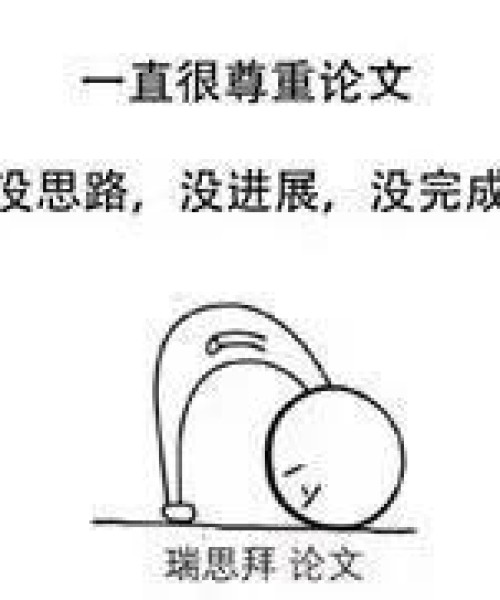What started out as a 6-woman gender discrimination complaint, has molded itself into what is now known as the largest civil rights class-action suit in United States history, representing over 2-million women, with Betty Dukes leading the way against Wal-mart stores. The gender discrimination present in Dukes vs. Wal-mart stores marks it as an unusual and interesting case because of its unique presence in this current contemporary society, where one would assume that more than four decades of federal and state laws would have eliminated gender discrimination, especially its presence in the highly regulated workforce that currently exists (Equal Rights Advocates, 2007).
Betty Dukes, the leading plaintiff in what is now known as the biggest civil rights case against a private U.S. company, was denied training that she had requested as a means of obtaining a promotion and as unfairly disciplined through a demotion and a forced pay cut when she complained about this unfair treatment (Rosen, 2003). However, this is less a case where a group of women were being discriminated against and sought out a means of equality, but rather, a case where women were sought out to make a discriminatory case specifically against Wal-mart. This class-action suit currently represents over 2 million women that have been working at Wal-mart since December 26, 1998. “Although women make up more than 72 percent of the Wal-mart sales force, they hold only on-third of the management jobs. Men hold 90 percent of Wal-mart's store manager positions and only one woman is among Wal-mart's top 20 officers” (ibid). The lawsuit charges “Wal-mart with systematic against women in pay, promotion and job assignments,” as well as paying them 37 cents less an hour than that of men for performing identical jobs (ibid). Interestingly enough, many taxpayers do not realize that by paying for federal, state, and county assistance which are essential for Wal-mart employees to survive, they are simultaneously “subsidizing Wal-mart's profits” (Rosen, 2003). This in itself is an incentive for the public to demand that Wal-mart pay their employees what they deserve and not discriminate based on gender or any other factor in general.
When in 2004 the appeals court overturned a ruling allowing the then 1.6 million women workers to form a class-action suit, Wal-mart said that they should remove this “class-action certification” because according to their studies, in 90% of its 3,400 stores, no disparity in pay existed between their male and female employees. However, outside studies of their pay patterns found that women actually made 5% to 15% less than their male counterparts. This was Wal-mart's shrewd attempt to separate the complainants, thus giving them less leverage in negotiations and costing each of them more in legal fees (The New York Times Co., 2004).
In concurrence with the court, I believe that Wal-mart should be mandated to pay men and women in equal positions the same amount for doing the same job. I also believe that skipping over more qualified women who are seeking higher job training for a less qualified male is discriminatory and should be regulated. However, I do not believe that job promotion being higher for men is entirely due to gender discrimination, but rather, is also due to job experience associated with skill level and time devoted to working.
According to current data, women in the U.S. on average earn 77 cents to every dollar that men earn. This disproportionality is quite devastating to both the issue of gender equality as well as to the family that must survive on less income (Lowell 2006). On average, women working at Wal-mart in the Unites States earn $1,400 less per year than men while doing the same job. However, these claims extend beyond being paid less for the same work and actually include male preference over woman when considering promotions (Equal Rights Advocates, 2004).However, in all fairness to a counterargument for this, one must also take into account the fact that women tend to choose jobs with flexibility, thus settling for less pay. Also, because of a woman's role in the home, it is typical for female's to take off more time for reasons such as childbirth and family care. Taking this information into account, one must see that although Wal-mart is in the wrong for not giving women equal pay for doing jobs identical with men, assuming that they blatantly promote men over women entirely because of gender cannot be done (Venable 2005).
The court found that Wal-mart's policies, in relation to hiring, promoting, and pay practices, rely too much on “excessive subjectivity,” and must examine and modify their policies so that they do not. Also, it was found that they must post and publicize internal promotion opportunities, thus reforming their current policy of simply having to seek out these advances on an individual basis which leads to discrimination and preferential treatment. In addition to these modifications, Wal-mart has to assess possible barricades in the advancement of women and minorities in their work force by incorporating the use of employment statistics as a basis for eliminating these barriers (Oh, 2004). The decision of this case is symbolic, in that, it sends a message to all companies that even the nation's largest employer must abide by civil rights law.
As much as Wal-mart would like us to believe that they are in the right by drawing upon lack of experience and time devotion to the job, the facts remain that they do not pay their male and female employees equal wages for performing similar jobs. I am specifically talking about the women who have significant job seniority over their male counterparts and are still paid significantly less and are passed by for promotions and even denied the opportunity to seek further training to enhance their abilities. This is, in fact, a case of blatant discrimination based on one's gender, which likes parallel with the stores underlying conservative views and policies.
I agree with the courts decision, but I would like to offer a concurring opinion for the verdict given by the court. It is in my opinion that certain “facts” and “statistics” were twisted out of context to manipulate and exaggerate the gender discrimination levels present in Wal-mart stores, as well as in large companies in general. However, despite these “twisted” facts, I also believe that fundamental Human Rights alone can justify the courts decision on the basic principle that men and women should be treated as equals. But in the spirit of the system present in the United States, one must base their decision on legal doctrines implemented by the federal and the state government. In respect to this system, it is evident that according to Title VII of the Civil Rights Act of 1964, Wal-mart was in violation of its practices in job hiring, pay, and promotion in regards to gender disparities. In fact, this case specifically charges Wal-mart as being in violation of the Title VII, prohibiting “employment discrimination based on race, color, religion, sex, or national origin” (http://www.eeoc.gov., 2002). This case also deals with the Equal Pay Act of 1963 (EPA), which “prohibits discrimination on the basis of sex in the payment of wages or benefits, where men and women perform similar skill, effort, and responsibility for the same employer under similar working conditions (ibid).
Those seeking to discredit my argument, which falls within a concurring alliance with that of the Court decision, cite ways in which this policy may be harmful, in which it may potentially lead to unintended consequences. This argument falls back on the argument that this decision as well as those similar to its basic principles, by using affirmative-like action to equalize opportunities in the work force, will result in reverse-gender discrimination, not unlike that which occurred earlier with minorities, in which men will suffer. However, this particular “potential for harm” notion is somewhat irrelevant if one abides by the Courts decisions as it is stated. In which, affirmative action is not the goal, but rather, pay equity for the same job and promotional opportunities for equally qualified women should be a standard, not just something that the Civil Rights Act promises but does not deliver.
The issue here is not how much a woman on average earns to every dollar that a man earns, but rather the disparity between their salaries for doing the same job and being able to receive similar opportunities for promotion when equally qualified. Therefore, it is in my opinion that women should have just as much equality in the workforce as their male counterparts.
Works Cited
“Federal Laws Prohibiting Job Discrimination: Questions and Answers.” The U.S. Equal Employment Opportunity Commission. Modified March 24, 2002. Univ of California Irvine. 28 July 2008. <http://www.eeoc.gov/facts/qanda.html>.
“Federal Court of Appeals Upholds Class Certification of Dukes v. Wal-Mart Stores.” Equal Rights Advocates. San Francisco: 2007. Univ of California Irvine. 28 July 2008. <http://www.equalrights.org/professional/DukesFeb%2007Explanation.pdf>
"Wal-Mart Asks Court to Remove Suit's Class-Action Status.(Business/Financial Desk)(Brief Article)." The New York Times. (Nov 30, 2004 pC12 col 03 (7 col): C12. Opposing Viewpoints Resource Center. Gale. Univ of California Irvine. 28 July 2008. <http://find.galegroup.com/ovrc/infomark.do?&contentSet=IAC-Documents&type=retrieve&tabID=T004&prodId=OVRC&docId=A125466015&source=gale&srcprod=OVRC&userGroupName=irvi75182&version=1.0>.
“USA: Wal-Mart hit by gender discrimination class action.” Equal Rights Advocates. San Francisco: 2004. Univ of California Irvine. 28 July 2008. <http://www.equalrights.org/media/justfood.asp>
Jack, Laura. “Learn More About the Dukes v. Wal-Mart Suit.” Wal-Mart Watch: November 2006. Univ of California Irvine. 28 July 2008. <http://walmartwatch.com/blog/archives/learn_more_about_dukes.>
Julie Lowell. "Women Face Discrimination in the Workplace." At Issue: Does Equality Exist in America?. Ed. Stuart A. Kallen. Detroit: Greenhaven Press, 2006. Opposing Viewpoints Resource Center. Gale. Univ of California Irvine. 28 July 2008. <http://find.galegroup.com/ovrc/infomark.do?&contentSet=GSRC&type=retrieve&tabID=T010&prodId=OVRC&docId=EJ3010407206&source=gale&srcprod=OVRC&userGroupName=irvi75182&version=1.0>.
Oh, James J. “Dukes v. Wal-Mart: A Foreboding Class Certification Decision for Employers.” Littler Mendelson, P.C: 2004. Univ of California Irvine. 28 July 2008. <http://library.findlaw.com/2004/Jul/12/133502.html>
Rosen, Ruth. “Women and Wal-Mart.” Longview Institute: 2003. Univ of California Irvine. 28 July 2008. < http://www.longviewinstitute.org/projects/moral/walmart/6.30.03>
Venable, Denise. "Women Do Not Earn Less than Men Due to Gender Discrimination." Opposing Viewpoints: Social Justice. Ed. William Dudley. San Diego: Greenhaven Press, 2005. Opposing Viewpoints Resource Center. Gale. Univ of California Irvine. 28 July 2008.<http://find.galegroup.com/ovrc/infomark.do?&contentSet=GSRC&type=retrieve&tabID=T010&prodId=OVRC&docId=EJ3010397219&source=gale&srcprod=OVRC&userGroupName=irvi75182&version=1.0>.









